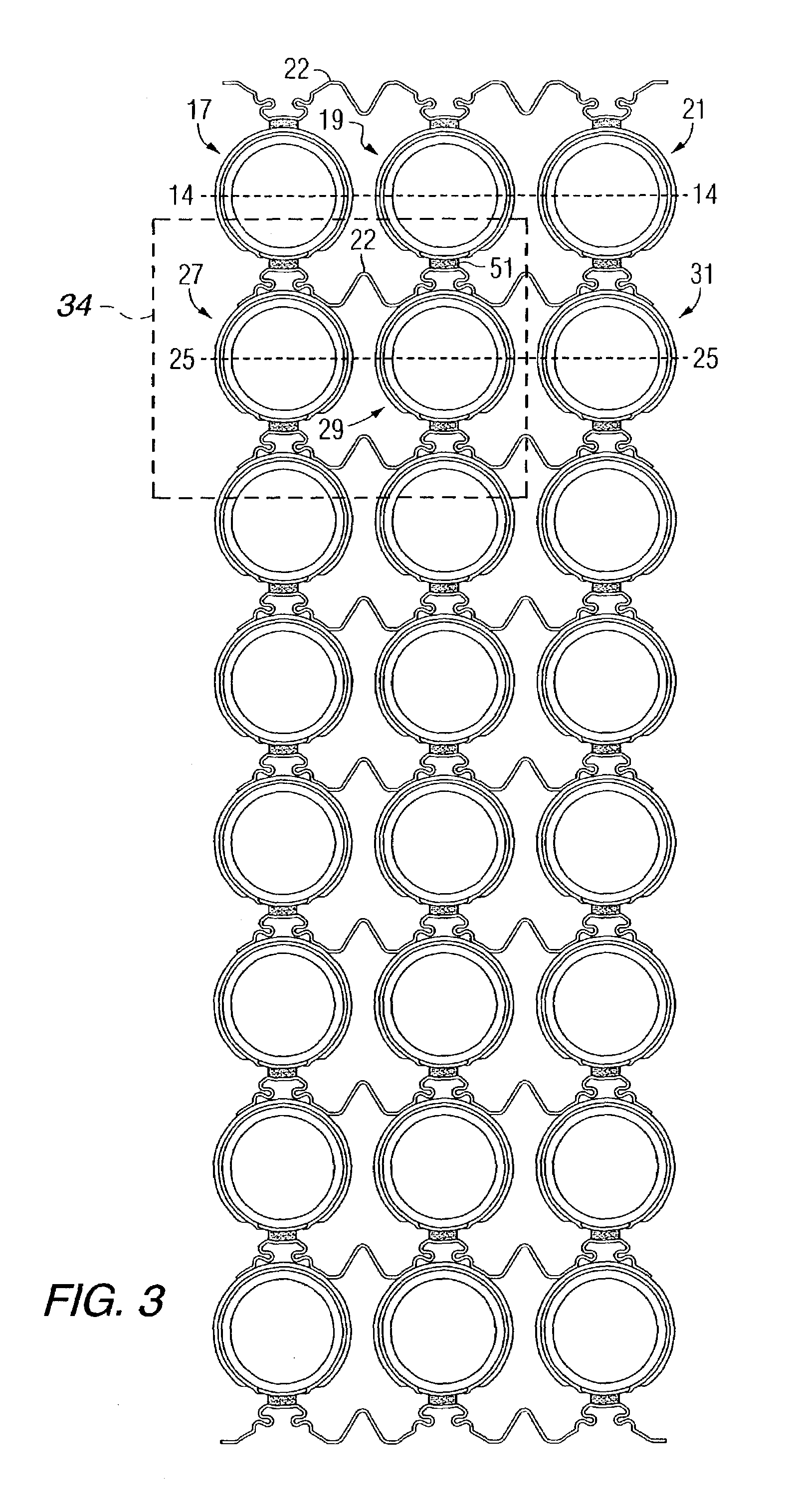Combination nickel foam expanded nickel screen electrical connection supports for solid oxide fuel cells
a technology of solid oxide fuel cells and electrical connections, which is applied in the direction of cell components, cell component details, electrochemical generators, etc., can solve the problems of increasing the cost of materials and labor, and reducing the overall strength of twenty-four cell subassemblies. , to achieve the effect of reducing production time, eliminating much hand labor, and improving conductivity
- Summary
- Abstract
- Description
- Claims
- Application Information
AI Technical Summary
Benefits of technology
Problems solved by technology
Method used
Image
Examples
example
[0046]Expanded nickel mesh, having diamond-shaped openings, about 65% porous and 0.05 cm (0.02 inch) thick, was placed in a roller die mold which gave the mesh a corrugated structure with a crown contour approximated to fit the contour of tubular solid oxide fuel cells to be made into a bundle similar to that shown in FIGS. 4 and 5. Each corrugated mesh structure was coated at the crown with a bead of epoxy cement admixed with about 70 wt. % small nickel particles. A thin strip of nickel foam (0.6 cm wide×0.17 cm thick×36 cm long), having a reticulated structure and about 85 pores per lineal inch, sold commercially by Inco under the model designation 200105031011 was placed on the bead of epoxy cement. Then another bead of similar epoxy cement was coated down the top length of he nickel foam strip and upon the shoulder of the mesh. The molded mesh and adhered nickel strips were then layered between rows of three fuel cells, to contact interconnections and fuel electrodes (as shown i...
PUM
| Property | Measurement | Unit |
|---|---|---|
| thickness | aaaaa | aaaaa |
| thickness | aaaaa | aaaaa |
| thick | aaaaa | aaaaa |
Abstract
Description
Claims
Application Information
 Login to View More
Login to View More - R&D
- Intellectual Property
- Life Sciences
- Materials
- Tech Scout
- Unparalleled Data Quality
- Higher Quality Content
- 60% Fewer Hallucinations
Browse by: Latest US Patents, China's latest patents, Technical Efficacy Thesaurus, Application Domain, Technology Topic, Popular Technical Reports.
© 2025 PatSnap. All rights reserved.Legal|Privacy policy|Modern Slavery Act Transparency Statement|Sitemap|About US| Contact US: help@patsnap.com



